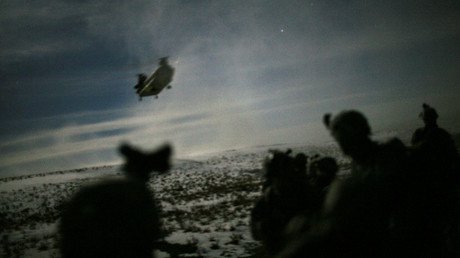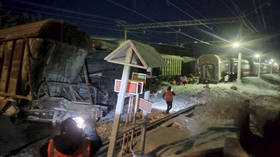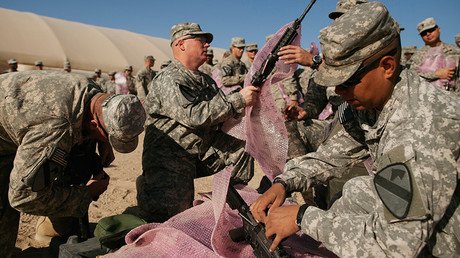Guns sold, guns lost: What Pentagon sent to Iraq & Afghanistan after 9/11

Since September 2001, the Pentagon has listed $40 billion worth of contracts for small arms intended for Afghanistan and Iraq, supplying 1.45 million guns to both countries while only accounting for 3 percent of them, says a new report by a British NGO.
The London-based nonprofit Action on Armed Violence (AOAV) pored over 14 years’ worth of contracts issued by the US Department of Defense, documenting the purchases of small arms – defined as anything under 30mm in caliber – ammunition and attachments, such as sniper scopes or tripods. They found a massive amount of weapons supplied by the US to the primary theaters of the “War on Terror,” and remarkably little accounting of whose hands they ended up in.
“Our findings raise concerns about the DOD’s own transparency and accountability when it comes to issuing contracts,” Iain Overton, AOAV’s director of investigations, said when announcing the report’s publication Wednesday.
Not only has the Pentagon’s contract database listed only 3 percent of the approximately 1.45 million small arms sent to Iraq and Afghanistan over the years, “we also know the US government has acknowledged they don’t know where many of these weapons now are,” Overton added.
The Pentagon as "state-building arms dealer" in Iraq & how its missions conflicted. https://t.co/NHfxtT61Og
— Sumita Pahwa (@SumitaPahwa) August 24, 2016
A team of AOAV researchers spent almost a year looking into every contract published by the Pentagon between September 11, 2001 and September 10, 2015, said the organization, whose mission is “research and advocacy in order to reduce the incidence and impact of global armed violence.”
What they found was just over $40 billion of solicitations for small arms, ammunition and attachments, with just under $20 billion actually paid out to contractors. Of the 412 published contracts, 137 – or 33 percent – contained errors and discrepancies.
Ten companies accounted for 65 percent of the total published contract values, the researchers found. The top five contractors were Alliant Techsystems – now split into OrbitalATK and Vista Outdoor – DRS Technologies, BAE Systems Inc., Knight’s Armament Co, and General Dynamics. The largest single contract was for the modernization of Lake City Army Ammunition Plant in Independence, Missouri, worth up to $8.48 billion.
Some 949,582 small arms were sent to Iraq, and another 503,328 to Afghanistan, amounting to 1,452,910 assault and sniper rifles, pistols, machine guns and other unspecified firearms. Yet the Department of Defense contract publications listed only 19,602 of these weapons, just over 1 percent of the total. When AOAV pressed for verification, the DOD provided itemized lists for 719,474 weapons provided through June 2016.
The numbers “tell the story of two wars that did not go as pitched,” veteran military correspondent CJ Chivers wrote in the New York Times Magazine, commenting on AOAV’s findings.
The retired Marine and author of The Gun also filled in a piece of the puzzle the researchers missed by not counting the grenade launchers and anti-tank weapons provided by the Pentagon.
“The data offer no insight into a startlingly risky aspect of the Pentagon’s arming of local forces with infantry arms: the wide distribution of anti-armor weapons, including RPG-7s,” Chivers wrote.
After the first few weeks of each war, the only armor on either battlefield was either American or allied, “which made the Pentagon’s practice of providing anti-armor weapons to Afghan and Iraqi security forces puzzling," Chivers wrote. "Why would they need anti-armor weapons when they had no armor to fight? All the while rockets were somehow mysteriously being fired at American convoys and patrols in each war.”














